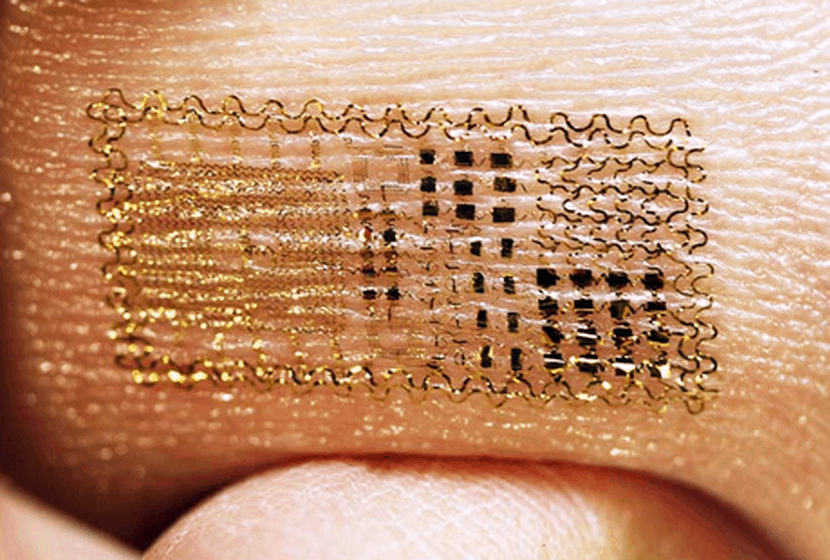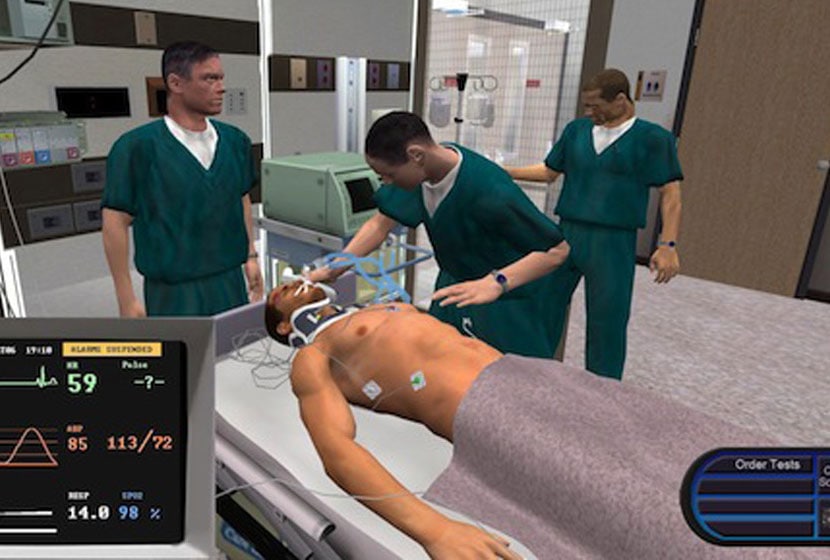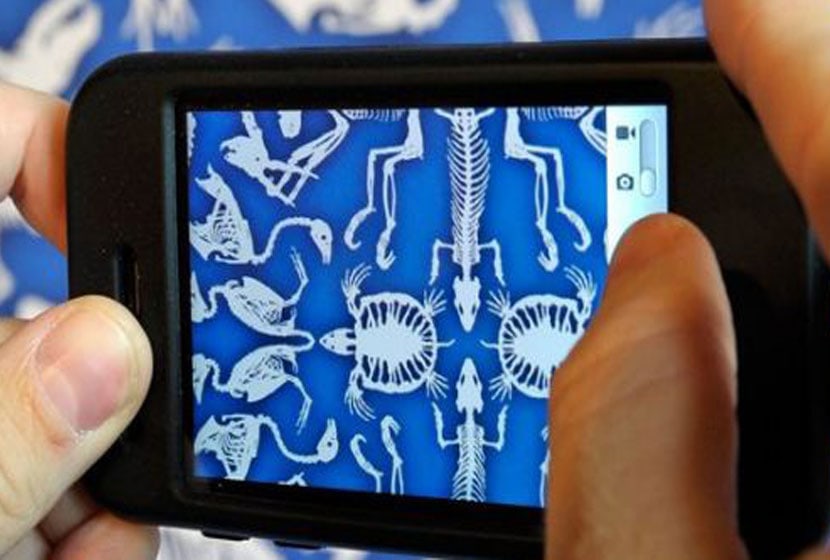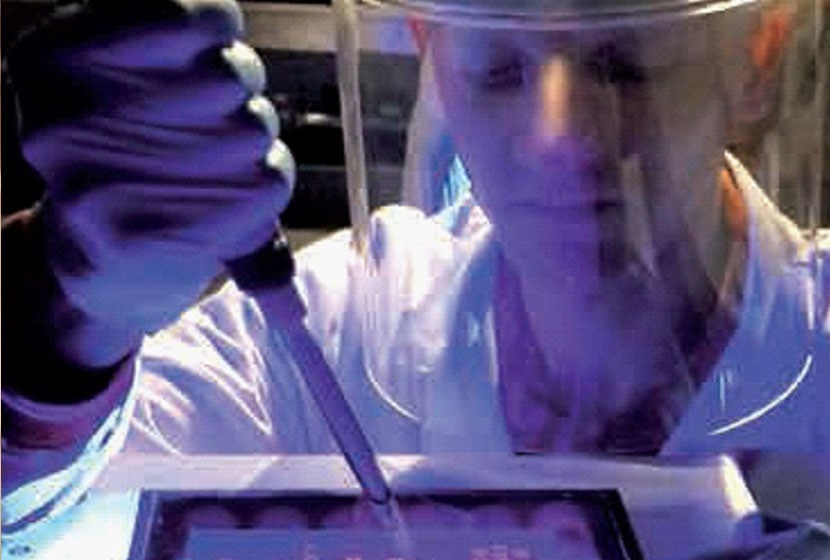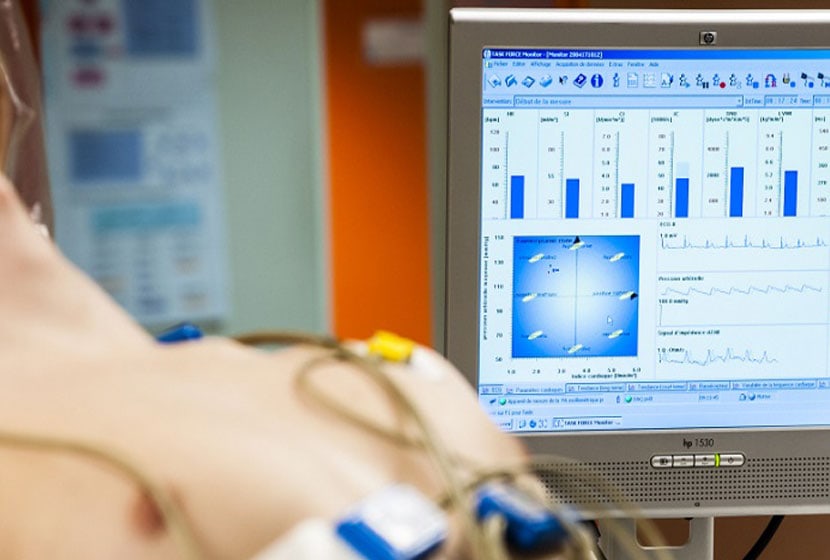At the beginning of 2013, the sixth Forum was held at the Palais de l'Unesco in Paris, France. Netexplowhich invited ten prize-winners-inventors to present their creations. This year, the jury of some 15 experts awarded a digital tattoo.
It's "Electronic Tattoos« an electronic tattoo developed by Lu Nanshu, a Chinese scientist accompanied by researchers from University of Austin, Texas.which was named Innovation of the Year. The scientist had already been honoured last year by MIT as one of the "35 Innovators Under 35".
This new medical monitoring tool, which is also painless for the patient (the epidermis tolerates it easily), makes it possible to measure the cardiac, cerebral or muscular activity of a patient, without taking away his freedom of movement, thus eliminating the usual electrodes.
"Electronic Tattoos" is a thin silicone membrane that sticks to the skin and gives the impression of a simple tattoo. However, this one is special because it is equipped with sensors that constantly monitor health parameters and transmit them wirelessly (using built-in transmitters) to a doctor. Resistant to hot showers or rubbing clothes for more than a week, it adapts to skin deformations and thus transforms it into a connected surface.
" This invention underlines the democratization of the "increased man" on a large scale", notes Thierry Happe, co-founder of Netexplo. « This system, initially developed for serious pathologies, will then be proposed for everyday prevention, which is not without raising important ethical questions".
Electronic Tattoos - Netexplo 2013 Winner by netexplorer
A reassuring monitoring method
The components of the tattoo capture the smallest vital signs such as temperature or pulse. Placed on the forehead, it can detect the manifestations of certain emotions, on the neck it can capture the action of the vocal cords and recognize the words spoken. With this device, a doctor could easily follow the effects of a treatment, an operation on his patient, or the evolution of a pregnancy without having to meet him physically. It also becomes possible to closely follow sports training.
In the case of chronically ill patients, it allows remote diagnosis to be evaluated and the progress of the disease to be monitored on an ongoing basis, thus offering a reassuring aspect for the patient. In addition, its discretion means that the patient can live a normal life and does not feel that he or she is "sick" in the eyes of others, which can give him or her the strength to fight the disease. Still in the test phase, it should soon be used in many medical applications, such as surgery or studies on brain activity. Nashu Lu is also looking to develop a tattoo capable of recording information and responding to it appropriately.
What future for electronic tattooing?
Improvements could be made to the current model by incorporating an internal memory or a lithium-ion battery. This object could open the door to new human-machine interfaces that would allow remote control of objects by simply moving parts of the body without even using motion sensors.
For example, by delivering a flow of electricity to the heart when a heart attack is detected or even by delivering the appropriate drug in real time when a disease-specific abnormality occurs. In addition, it could also be used in the video game industry. For example, applying a tattoo on the throat of a video game user would make it possible to detect voice commands by distinguishing words such as "left" or "right" and thus control an electronic device remotely.
However, we may wonder whether this real-time medical monitoring device is not an invasion of privacy, because if these sensors eventually manage to measure our moods and motivations, many marketers may be interested in using this data?
Other examples of tattoos as medical sensors
 Photo © Ken Jones
Photo © Ken Jones
Other researchers at University of Toronto at Scarboroughincluding Vinci Hung, have developed a sensor in the form of a temporary tattoo to help doctors detect metabolic problems in patients and facilitate the work of coaches in training athletes.
This tattoo, in the shape of a smiling face, can actually detect changes in skin pH levels in response to metabolic stress from exercise. Similar devices, called ion-selective electrodes (ISEs) are already being used by medical researchers and sports trainers. They can provide clues underlying metabolic diseases such as Addison's disease, or simply signal if an athlete is tired or dehydrated during training.
Vinci Hung explains that they wanted to " a design that could conceal the electrodes« . "In addition, they wanted to..." also highlight the diversity of designs that can be accomplished with this manufacturing technique". By using different detection materials, tattoos can also be modified to detect other components of sweat, such as sodium, potassium or magnesium, which may be of interest to medical and cosmetic researchers.
{Jacuzzi on}

